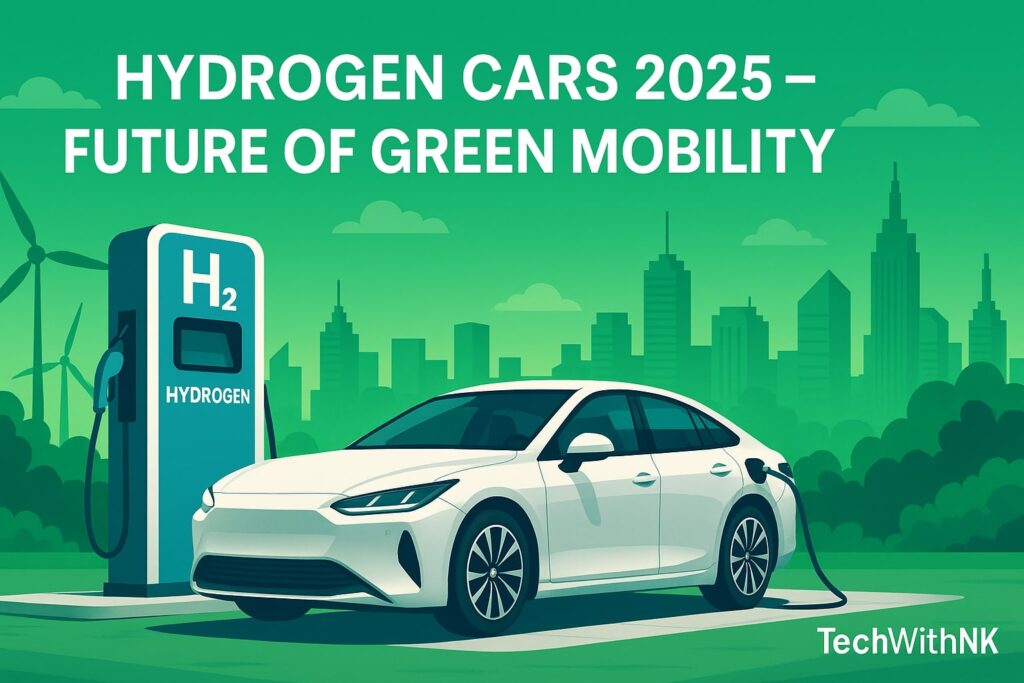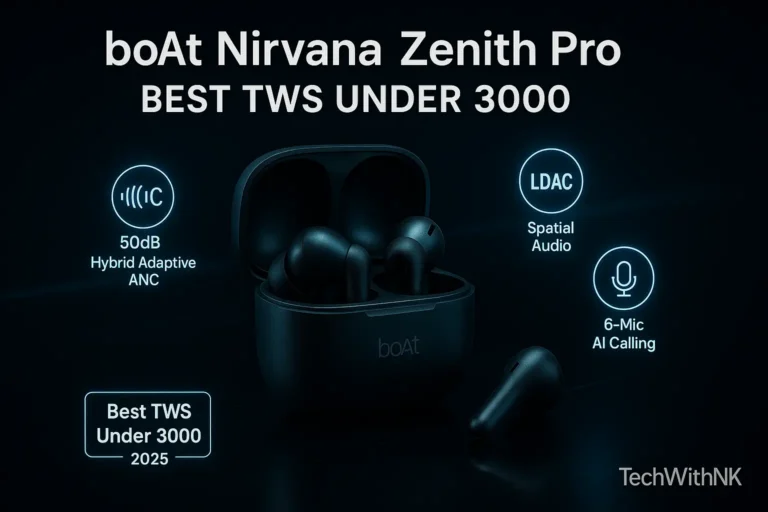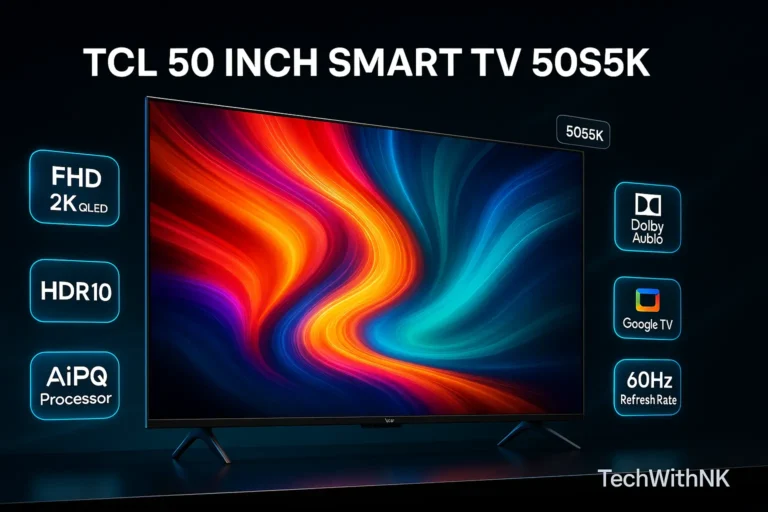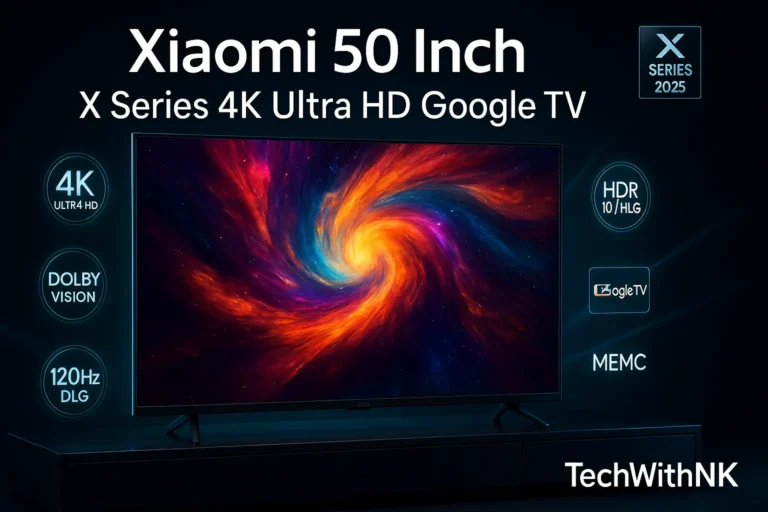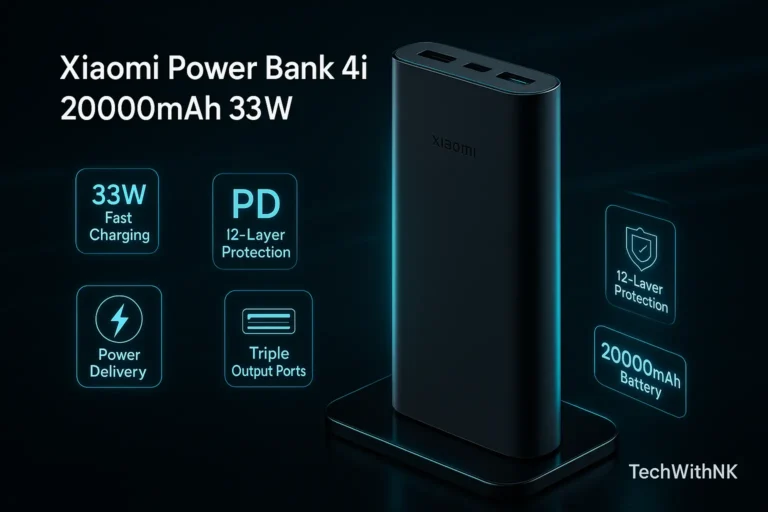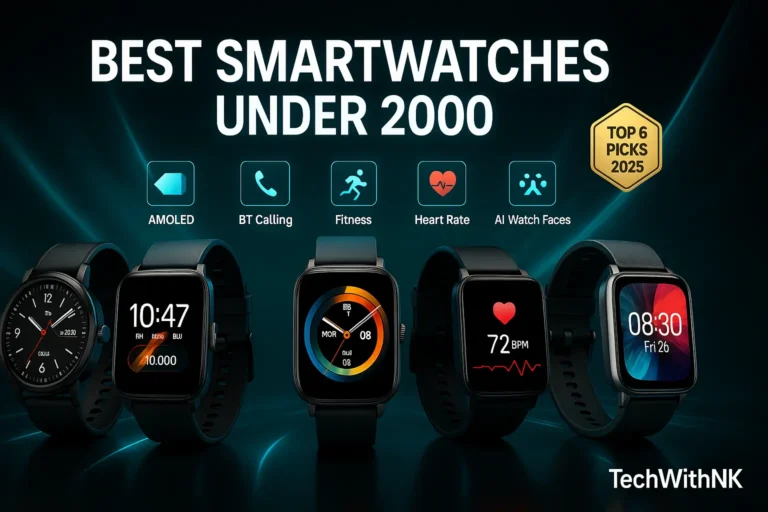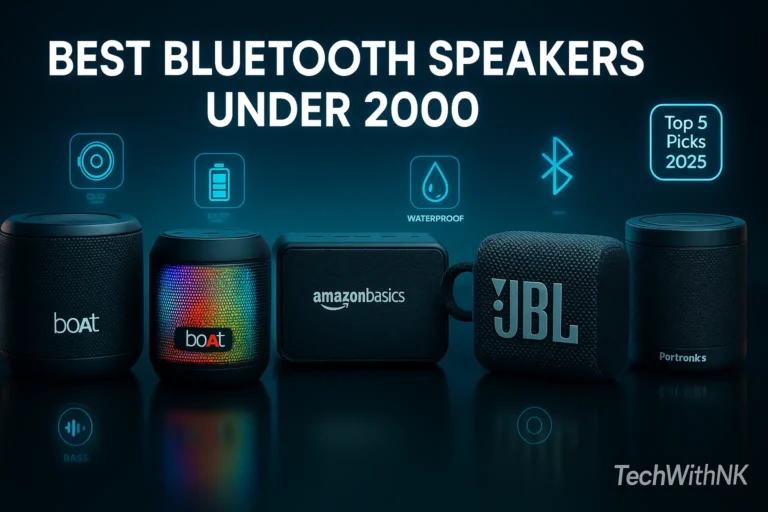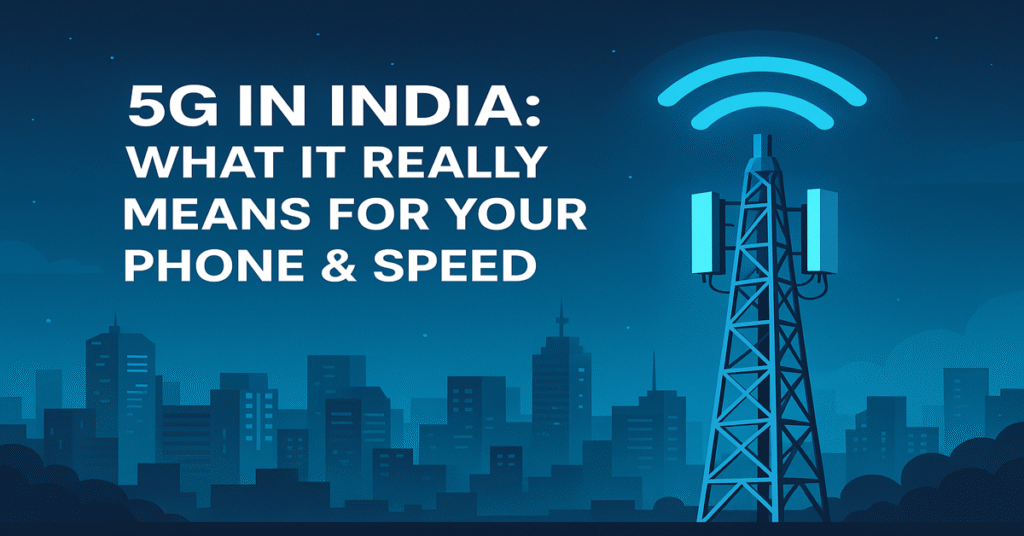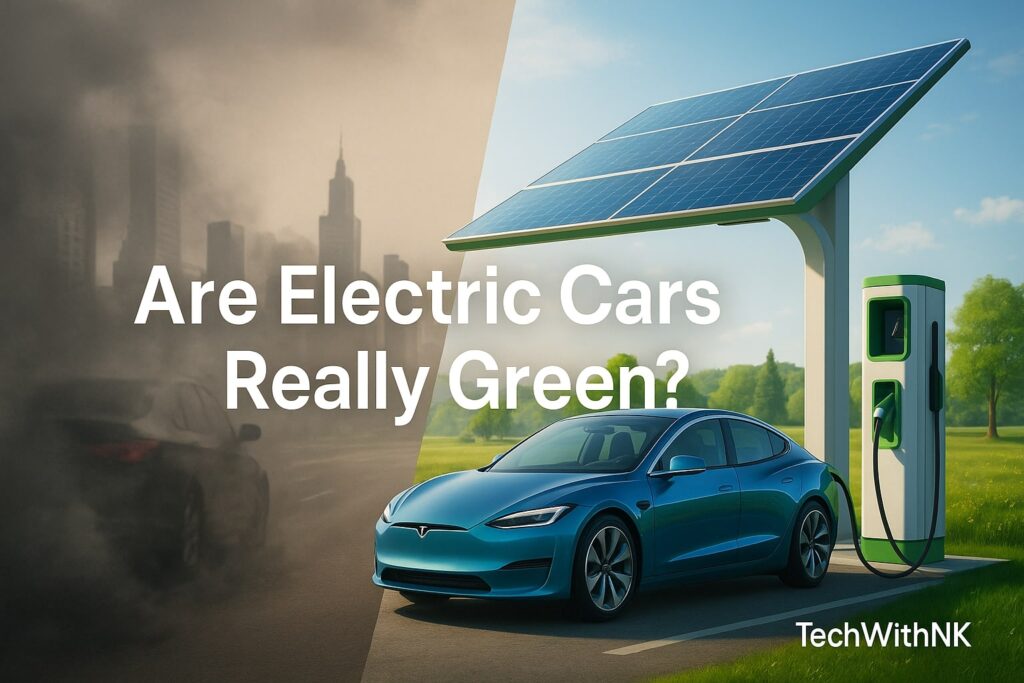Table of Contents
Toggle1. Introduction: Why Hydrogen in 2025?
The year 2025 marks a crucial turning point in the global fight against climate change. Governments, industries, and consumers are demanding cleaner alternatives to fossil fuels. While electric vehicles (EVs) dominate headlines, hydrogen-powered cars are quietly emerging as a powerful contender in the race for green mobility.
Hydrogen fuel cell vehicles (FCVs) offer fast refueling times, long ranges, and true zero emissions—making them attractive for both personal and commercial transportation. But are hydrogen cars really the future of mobility in 2025? Or are they still a “technology of tomorrow”?
2. What Are Hydrogen Powered Cars?
Hydrogen cars, also called Fuel Cell Electric Vehicles (FCEVs), run on hydrogen gas instead of petrol, diesel, or pure battery power. Instead of burning hydrogen like gasoline, they use a fuel cell to combine hydrogen with oxygen from the air.
The reaction produces:
Electricity (to power the motor)
Heat
Water vapor (H₂O) as the only emission
In simple terms: Hydrogen cars are electric cars that generate their own electricity inside the vehicle, instead of storing it in large batteries.
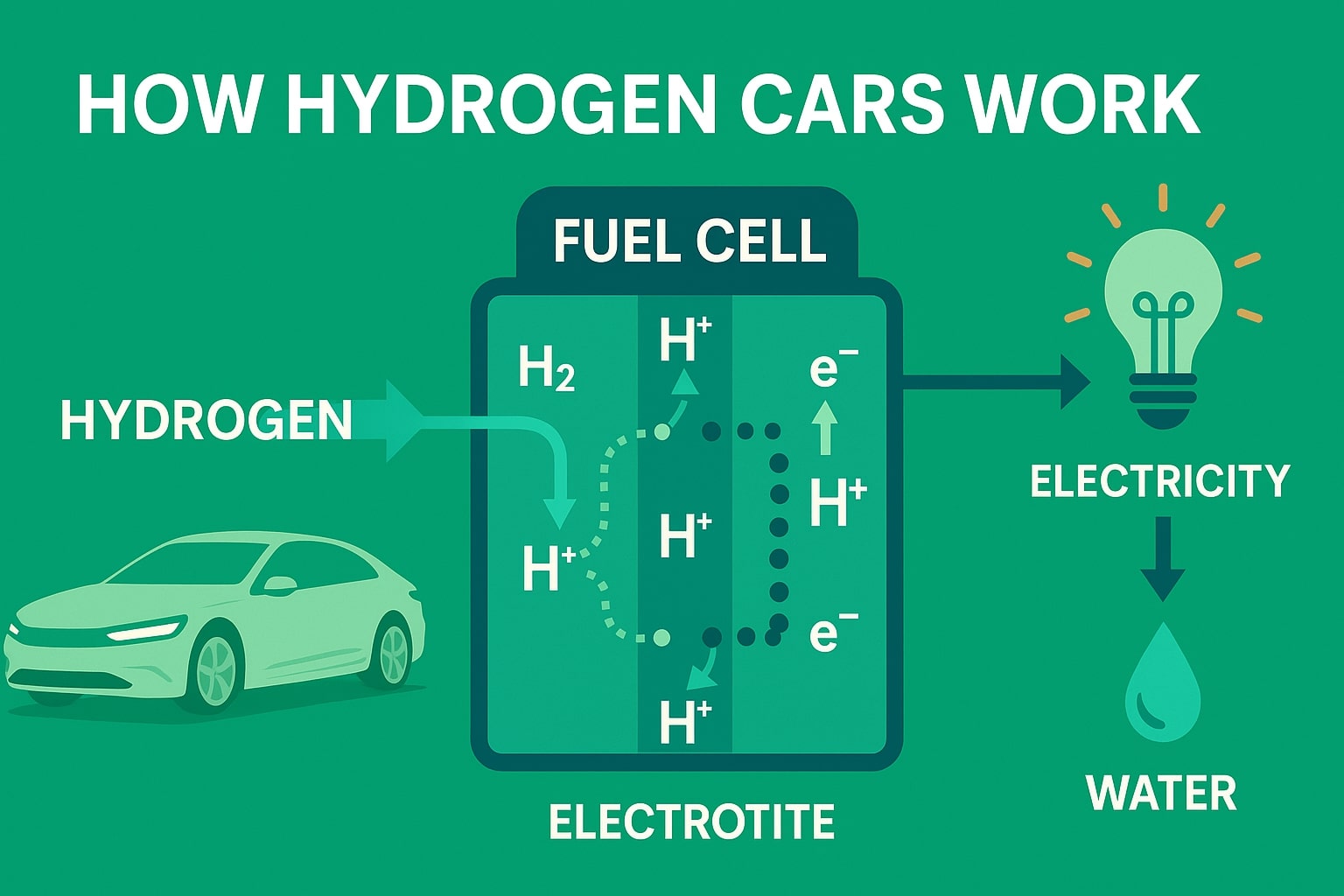
3. The Science Behind Hydrogen Fuel Cells
At the heart of hydrogen cars is the Proton Exchange Membrane Fuel Cell (PEMFC).
Basic Process:
Hydrogen (H₂) is stored in high-pressure tanks (350–700 bar).
Hydrogen flows into the fuel cell.
Hydrogen molecules split into protons and electrons.
Electrons create an electric current to power the motor.
Protons move through the membrane and combine with oxygen (O₂) from the air.
The result: H₂O (water vapor) is released as the only by-product.
This makes hydrogen cars 100% emission-free at the tailpipe.
4. Hydrogen vs. Electric vs. Petrol/Diesel
| Feature | Hydrogen Cars (FCEV) | Battery Electric Cars (BEV) | Petrol/Diesel Cars |
|---|---|---|---|
| Emissions | Zero (water vapor only) | Zero (depends on electricity source) | High CO₂, NOx, SOx |
| Refueling Time | 3–5 minutes | 30 mins–12 hrs | 2–3 minutes |
| Range | 500–700 km | 250–600 km | 400–800 km |
| Energy Source | Hydrogen fuel cell | Lithium-ion batteries | Fossil fuels |
| Infrastructure | Limited refueling stations | Growing charging networks | Global, well-established |
| Cost (2025) | Expensive | Affordable options available | Moderate |
5. History and Evolution of Hydrogen Cars
1960s: NASA used hydrogen fuel cells in spacecraft.
1990s: Automakers began experimenting with hydrogen cars.
2014: Toyota Mirai became the first commercial hydrogen car.
2020s: Hyundai NEXO and Honda Clarity launched globally.
2025: More global investment, BMW joins the market, India pushes hydrogen under “National Hydrogen Mission”.
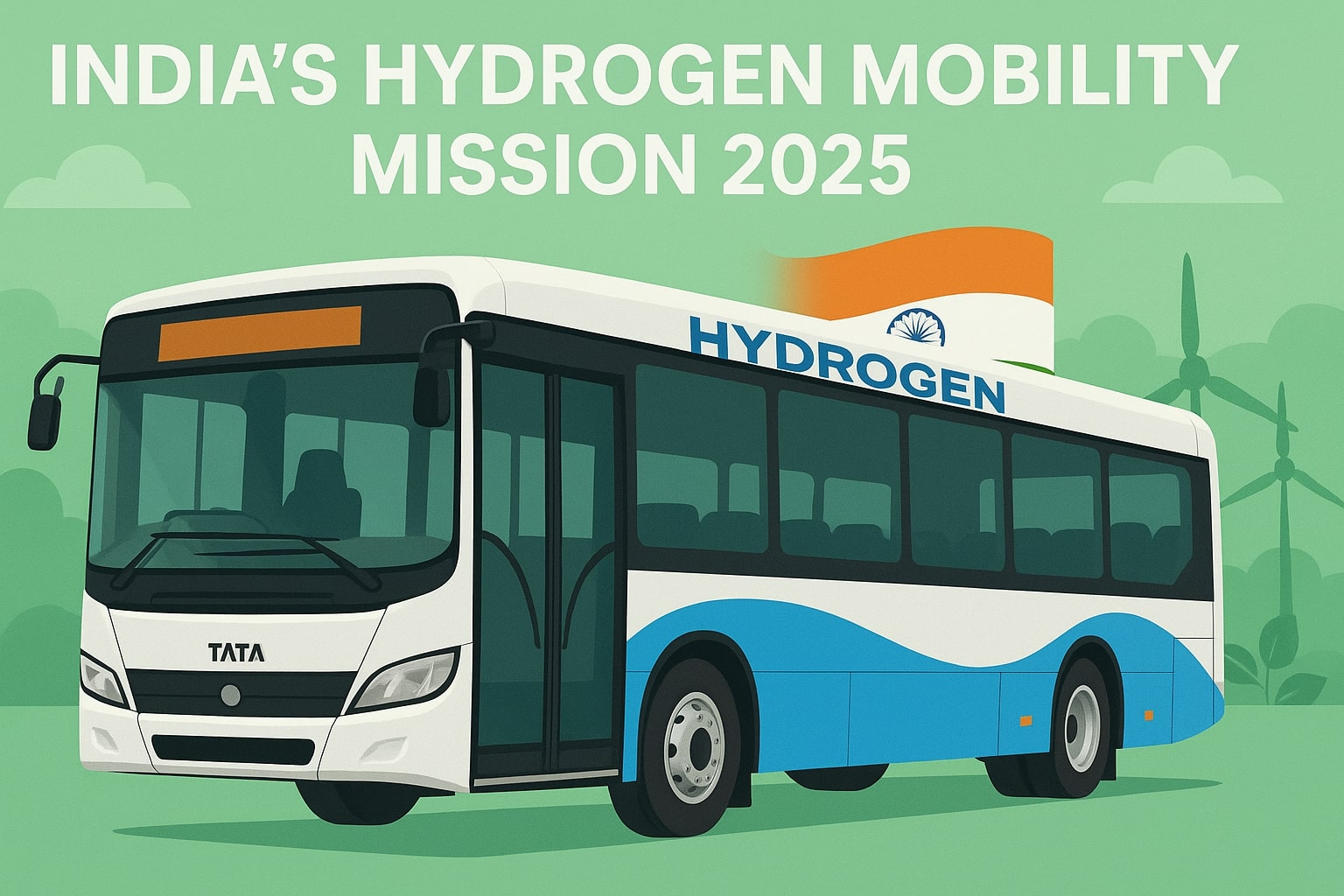
6. Why 2025 is a Turning Point for Hydrogen Mobility
2025 is special because:
Governments are funding hydrogen infrastructure (Japan, EU, India).
Automakers like BMW, Toyota, Hyundai are betting big on hydrogen.
Green Hydrogen projects are scaling up with renewable energy.
Battery EV challenges (slow charging, rare earth dependency) make hydrogen attractive.
7. Benefits of Hydrogen powerd Cars
7.1 Zero Emissions
No CO₂, no toxic gases—only water vapor.
7.2 Fast Refueling
Hydrogen tanks can be refilled in 3–5 minutes, similar to petrol/diesel cars.
7.3 Long Driving Range
Hydrogen cars can travel 500–700 km on a single tank—ideal for long-distance travel.
7.4 Lighter than Batteries
Hydrogen fuel cells are lighter than massive EV batteries, improving efficiency.
7.5 Scalability for Heavy Vehicles
Hydrogen is better suited for trucks, buses, and ships compared to batteries.
8. Challenges Facing Hydrogen powerd Cars
8.1 High Cost
Hydrogen cars cost $60,000+ due to expensive fuel cell technology.
8.2 Lack of Infrastructure
Hydrogen stations are rare. In 2025, Japan has ~200, Germany ~100, India is just starting.
8.3 Storage & Safety Concerns
Hydrogen is flammable and must be stored at very high pressures.
8.4 Efficiency Debate
Producing hydrogen requires electricity—sometimes more than charging EVs directly.
9. Hydrogen Cars Around the World
Japan – The Global Leader
Toyota Mirai is widely available. Government subsidies support adoption.
South Korea – Hyundai at the Front
Hyundai NEXO is one of the most popular hydrogen cars.
USA – California’s Push
Over 12,000 hydrogen cars registered, but stations mostly in California.
Europe – Germany’s Bet on Hydrogen
Germany invests in 400+ hydrogen stations by 2030.
India – The National Hydrogen Mission
India aims to produce 5 million tonnes of green hydrogen annually by 2030. Tata Motors and Ashok Leyland are testing hydrogen buses and trucks.
10. Popular Hydrogen Car Models in 2025
Toyota Mirai (2nd Gen) – Range: ~650 km
Hyundai NEXO – Range: ~600 km
Honda Clarity Fuel Cell – Range: ~550 km
BMW iX5 Hydrogen – Luxury SUV hydrogen variant
Tata Hydrogen Bus (India) – Commercial mobility
11. Hydrogen Refueling Infrastructure in 2025
Japan: 200+ stations
Germany: 100+ stations
USA (California): 60+ stations
India: Pilot projects in Delhi, Gujarat
12. Cost of Owning a Hydrogen Car in 2025
Average price: $50,000–70,000 (₹40–60 lakhs)
Hydrogen fuel cost: ~$10–15 per kg
Running cost: ~$0.12–0.15 per km (higher than EVs, lower than petrol cars)
13. Environmental Impact & Green Hydrogen Future
Hydrogen is only green if produced from renewables (solar, wind, hydro).
Currently, 80% hydrogen is grey (from natural gas, emits CO₂).
2025 marks a shift toward green hydrogen, supported by global projects.
14. Hydrogen in Heavy Transport
Hydrogen is especially promising for:
Trucks (Hyundai XCIENT, Nikola Motors)
Buses (Tata, Toyota, Van Hool)
Trains (Germany’s Alstom Coradia iLint hydrogen train)
Ships & Airplanes (still experimental)
15. Government Policies & Investments
EU Hydrogen Strategy (2020–2030): €430 billion investment
Japan’s Hydrogen Roadmap: Olympics showcased hydrogen buses
India’s National Hydrogen Mission: $2.3 billion in incentives
16. Public Perception & Adoption
Consumers see hydrogen as futuristic but costly. Adoption is slow due to lack of refueling stations. However, commercial fleets (taxis, buses) are adopting faster.
17. Hydrogen Cars vs. Battery EVs: Who Wins?
EVs dominate small cars, city driving.
Hydrogen shines in long-range, heavy-duty vehicles.
Future mobility may be a hybrid of both technologies.
18. Future Predictions: Beyond 2025
By 2030, hydrogen may power 15–20% of global transport.
Hydrogen & EVs will co-exist.
Falling costs of green hydrogen will make it competitive with petrol.
19. Case Studies & Real-World Examples
Germany’s Hydrogen Trains saved 4,400 tonnes of CO₂ annually.
Japan’s Mirai Fleet in Tokyo reduced urban pollution significantly.
India’s Hydrogen Buses in Delhi NCR are under pilot testing.
20. Conclusion
Hydrogen-powered cars in 2025 are not just a dream—they’re real, running on roads today. While electric cars will dominate urban markets, hydrogen will play a key role in long-distance, heavy transport, and green future mobility.
The question is not EV vs. Hydrogen but how both can coexist to reduce our carbon footprint.
Are hydrogen cars available in India in 2025?
Yes, pilot projects exist. Tata Motors and Toyota are testing hydrogen buses and cars under India’s National Hydrogen Mission.
Are hydrogen cars better than EVs?
Hydrogen cars are better for long-range and heavy-duty transport, while EVs are more practical for short-range city driving.
How safe are hydrogen cars?
Modern hydrogen cars use advanced tanks that are safer than petrol tanks. Hydrogen disperses quickly, reducing fire risk.

